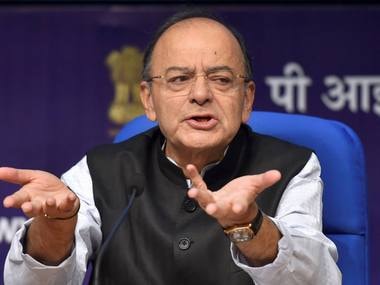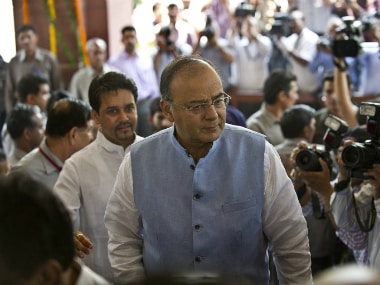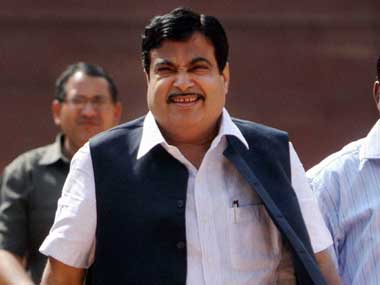The Union Budget for FY19 evokes special interest because it is the classic case of a pre-elections presentation of fiscal intention. It is normally assumed that such budgets tend to be moderate in tone, liberal with allocations for the weaker sections and parsimonious with reforms that can upset the equilibrium.
This Budget will also be important as it will tell us not just about how the GST has panned out but also the assumptions being made for the coming year, which will give some idea of whether the tax reform has been neutral in impact or to the advantage of the government or citizens.
There are some numbers that will be interesting to watch out for. First is the size of the overall budget which was Rs 21.5 lakh crore last year with an increase of just 6.6 percent compared with 10.4 percent in FY17. This is important because prior to the elections, governments can either inflate the size of the budget in which case it can be going back to the 10 percent mark or merely reallocate expenditures within the existing numbers. This would be the first thing to watch out for on 1 February.
Second, the assumption of the GDP growth rate will be quite critical. While it should ideally be the benchmark for fixing revenue targets, this link does not work practically. But the number is significant as the ratio of fiscal deficit to GDP, which seems to be the leading light of the budget, is dependent on this number. Here, from the fiscal front, there will be an advantage as a reasonable real GDP growth of 7.5 percent coupled with higher inflation of 5 percent will ensure that the denominator is more favourable to a fiscal deficit ratio with the growth rate being 12.5 percent compared with 11.75 percent targeted last year.
Third, the disinvestment target will be of interest. In FY18, the target of Rs 72,500 crore would probably be exceeded as the markets were favorable. Will this be the case in FY19 too? It is an important question because in the past such decisions were not taken with alacrity because a weak market affects valuations which in turn pressurize any stake sale as the optimal value cannot be realized. With there being some talk of taxing equity gains in an analogous manner to debt, there could be a shock for the market, in which case the current honeymoon would end. Therefore a careful call has to be taken here.
Fourth, the capital expenditure plan of the government which is concentrated in railways, roads and urban development requires special mention. Growth has been maintained at just above 10 percent, which is higher than the growth in total outlay. Will this be maintained this year too? This is important because if the government has to shuffle expenditures within the targeted lower growth rate, then maintaining this momentum will not be possible. The conundrum is that even today the central government is the most active investment generator in the economy and cannot afford to slow down. On the other hand pressure on increasing both food and fuel subsidy and higher interest payments (the recap bonds will add to this number) will increase revenue expenditure.
Fifth, the thought process on subsidy will be watched closely. The government has so far not had to encounter the challenge of high oil prices. While a number of $50 perbarrel was taken last year, it has to be enhanced to at least $65 this year. This will pose a challenge on the fiscal account and there are three things to look at. With prices going up, the government may have to cut the taxes to control the prices. Alternatively, the subsidy of Rs 25,000 crore has to be enhanced and given that the allocation for food and fertilizer cannot be reduced in a pre-election year, the bill will increase. The last option is to sit back and let inflation increase. But if it does go up to prodigious levels of 8-10 percent, then there can be a problem at the Election time as last time the promise made was to lower inflation. Therefore some balance has to be struck here.
Sixth, the ultimate fiscal deficit number will be something watched especially by global agencies. The question is whether or not the government will pitch for some flexibility in the number and settle for something at 3.5 percent to ensure that all the challenges mentioned above are addressed. It is true that the shock of lower Reserve Bank of India (RBI) payments of surpluses did affect the balances sharply but this will not be repeated. But there could be surprise on GST collections for the centre as it is still an unknown today. Therefore, the fiscal deficit ratio will be under close scrutiny.
Last related to the deficit is the borrowing program of the government. In the past, the gross program has been around Rs 6 lakh crore of which Rs 2.3-2.5 lakh crore would be repayments resulting in net borrowing of around Rs 3.5 lakh core. However, there have been important sources of revenue such as small savings, state PFs, external borrowings, cash withdrawals and other receipts (from the public account), which have amounted to above Rs 2 lakh crore.
With low returns on small savings, there are already pressures on receipts and the government will have to take a reasonable call on whether gross borrowings will have to upped or more cash drawn down to ensure that the market is not jolted, which is possible if the number is high. With bank deposits not growing and banks under pressure of liquidity a higher borrowing program will upset the yields which can move upwards.
The Budget announcements will hence provide a clue on the ideology of the government with respect to the FRBM targets especially in a pre-election year. Working around with the numbers will be the main focus as we will be betting on behaviour of GST revenue, enhanced direct tax payers, better performance of PSUs and RBI, and buoyant stock markets which will be balanced with higher crude oil prices, more allocations for the social sector, and capex compulsions. The final outcome would be revealed on 1 February, which makes it an important day on the economic calendar.
For full coverage of Union Budget 2018, click here.
Published Date: Jan 23, 2018 09:53 AM | Updated Date: Jan 23, 2018 09:53 AM


















